Role of phosphorylated histone H3 serine 10 in DEN-induced deregulation of Pol III genes and cell proliferation and transformation
- PMID: 23774401
- PMCID: PMC3888355
- DOI: 10.1093/carcin/bgt219
Role of phosphorylated histone H3 serine 10 in DEN-induced deregulation of Pol III genes and cell proliferation and transformation
Abstract
The products of Pol III genes (RNA polymerase III-dependent genes), such as tRNAs and 5S rRNA, are elevated in both transformed and tumor cells suggesting that they play a crucial role in tumorigenesis. An increase in Brf1 (TFIIIB-related factor 1), a subunit of TFIIIB, augments Pol III gene transcription and is sufficient for cell transformation and tumor formation. We have demonstrated that enhancement of Brf1 and Pol III gene expression is associated with the occurrences of hepatocellular carcinoma (HCC) in mice. This suggests that Brf1 may be a key molecule during HCC development. Diethylnitrosamine (DEN), a chemical carcinogen, has been used to induce HCC in rodents. To determine the role of Brf1 and the epigenetic-regulating events in cell proliferation and transformation, hepatocytes were treated with DEN. The results indicate that DEN increases proliferation and transformation of AML-12 cells. DEN enhanced Brf1 expression and tRNA(Leu) and 5S rRNA transcription, as well as H3S10ph (phosphorylation of histone H3 serine 10). Interestingly, DEN-induced Pol III gene transcription and H3S10ph in tumor cells of liver are significantly higher than in non-tumor cells. Inhibition of H3S10ph by H3S10A attenuates the induction of Brf1 and Pol III genes. Further analysis indicates that H3S10ph occupies the promoters of Brf1 and Pol III genes to modulate their expression. Blocking H3S10ph represses cell proliferation and transformation. These results demonstrate that DEN induces H3S10ph, which mediate Brf1 expression, including but not limited Brf1-dependent genes, to upregulate Pol III gene transcription, resulting in an increase in cell proliferation and transformation.
Figures
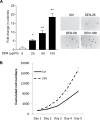

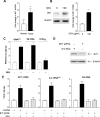
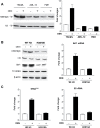

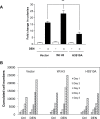
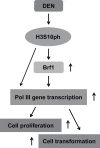
Similar articles
-
Phosphorylation of histone H3 serine 28 modulates RNA polymerase III-dependent transcription.Oncogene. 2011 Sep 15;30(37):3943-52. doi: 10.1038/onc.2011.105. Epub 2011 Apr 4. Oncogene. 2011. PMID: 21460852 Free PMC article.
-
Alcohol induces RNA polymerase III-dependent transcription through c-Jun by co-regulating TATA-binding protein (TBP) and Brf1 expression.J Biol Chem. 2011 Jan 28;286(4):2393-401. doi: 10.1074/jbc.M110.192955. Epub 2010 Nov 24. J Biol Chem. 2011. PMID: 21106530 Free PMC article.
-
Exploring a common mechanism of alcohol-induced deregulation of RNA Pol III genes in liver and breast cells.Gene. 2017 Aug 30;626:309-318. doi: 10.1016/j.gene.2017.05.048. Epub 2017 May 25. Gene. 2017. PMID: 28552569 Free PMC article.
-
ROS Signaling-Mediated Novel Biological Targets: Brf1 and RNA Pol III Genes.Oxid Med Cell Longev. 2021 Oct 4;2021:5888432. doi: 10.1155/2021/5888432. eCollection 2021. Oxid Med Cell Longev. 2021. Retraction in: Oxid Med Cell Longev. 2024 Jan 9;2024:9890237. doi: 10.1155/2024/9890237. PMID: 34646425 Free PMC article. Retracted. Review.
-
RNA polymerase III transcription and cancer.Oncogene. 2004 Apr 19;23(18):3208-16. doi: 10.1038/sj.onc.1207547. Oncogene. 2004. PMID: 15094770 Review.
Cited by
-
Role of Brf1 interaction with ERα, and significance of its overexpression, in human breast cancer.Mol Oncol. 2017 Dec;11(12):1752-1767. doi: 10.1002/1878-0261.12141. Epub 2017 Oct 27. Mol Oncol. 2017. PMID: 28972307 Free PMC article.
-
Exploring the Role and Mechanism of pAMPKα-Mediated Dysregulation of Brf1 and RNA Pol III Genes.Oxid Med Cell Longev. 2021 Apr 20;2021:5554932. doi: 10.1155/2021/5554932. eCollection 2021. Oxid Med Cell Longev. 2021. PMID: 33995823 Free PMC article.
-
Alcohol Intake and Abnormal Expression of Brf1 in Breast Cancer.Oxid Med Cell Longev. 2019 Oct 31;2019:4818106. doi: 10.1155/2019/4818106. eCollection 2019. Oxid Med Cell Longev. 2019. PMID: 31781337 Free PMC article. Review.
-
Role of betaine in inhibiting the induction of RNA Pol III gene transcription and cell growth caused by alcohol.Chem Biol Interact. 2020 Jul 1;325:109129. doi: 10.1016/j.cbi.2020.109129. Epub 2020 May 11. Chem Biol Interact. 2020. PMID: 32418914 Free PMC article.
-
GTF3C2 Promotes the Proliferation of Hepatocellular Carcinoma Cells through the USP21/MEK2/ERK1/2 Pathway.J Clin Transl Hepatol. 2025 May 28;13(5):374-384. doi: 10.14218/JCTH.2024.00386. Epub 2025 Feb 11. J Clin Transl Hepatol. 2025. PMID: 40385937 Free PMC article.
References
-
- El-Serag H.B., et al. (2007). Hepatocellular carcinoma: epidemiology and molecular carcinogenesis. Gastroenterology, 132, 2557–2576 - PubMed
-
- Naugler W.E., et al. (2007). Gender disparity in liver cancer due to sex differences in MyD88-dependent IL-6 production. Science, 317, 121–124 - PubMed
-
- Watanabe T., et al. (2009). Dose-dependent alterations in gene expression in mouse liver induced by diethylnitrosamine and ethylnitrosourea and determined by quantitative real-time PCR. Mutat. Res., 673, 9–20 - PubMed
Publication types
MeSH terms
Substances
Grants and funding
LinkOut - more resources
Full Text Sources
Other Literature Sources
Molecular Biology Databases

